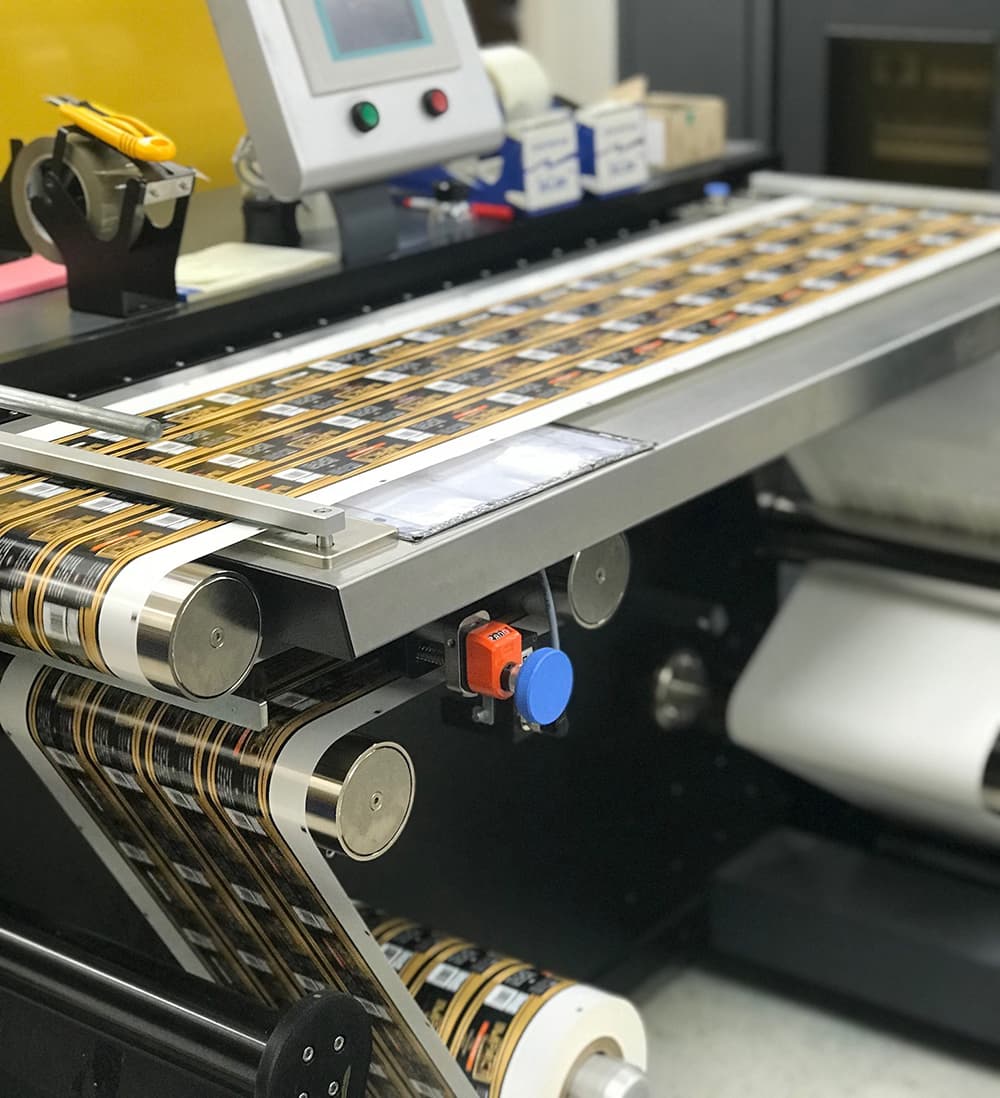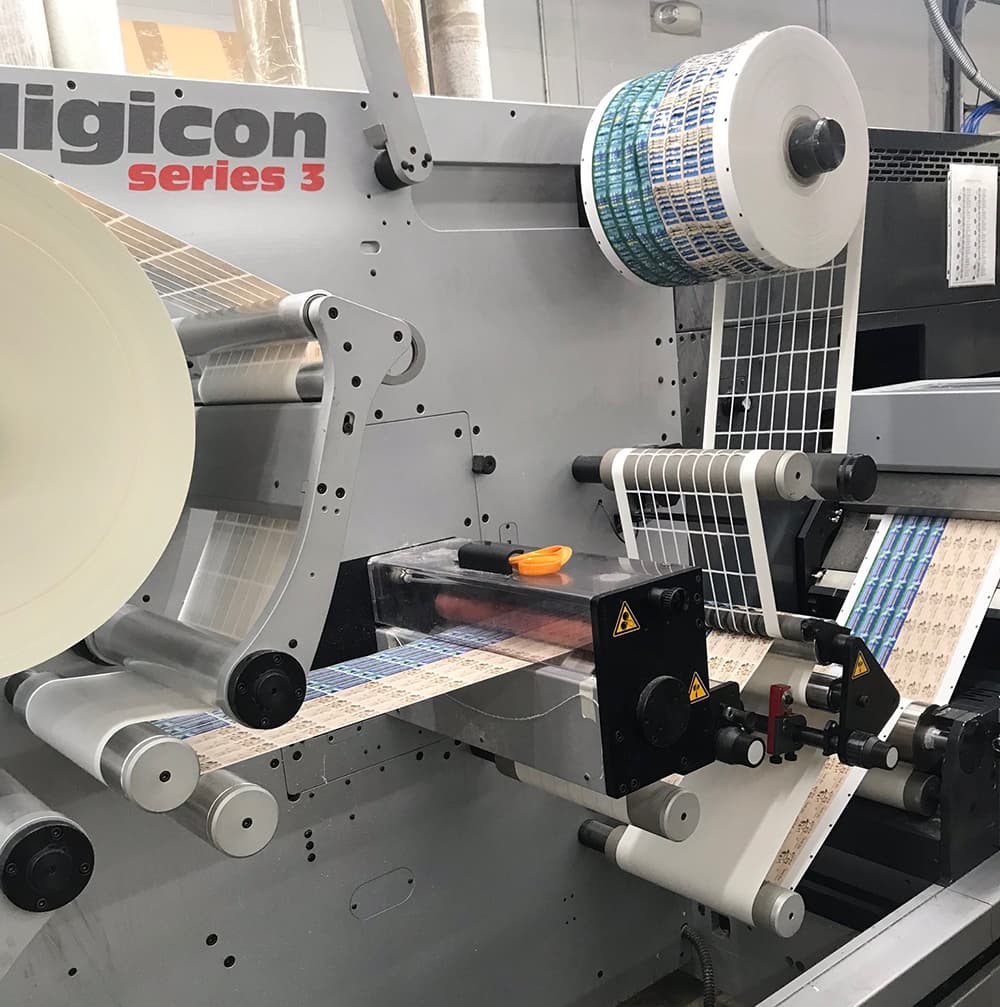Spot Color vs. Digital Printing: What You Need to Know
This entry was posted on October 04, 2024 .
If you’ve been wondering about the difference between spot color and digital printing, or if you’ve heard people talking about UV spot printing, you’re not alone.
Many businesses looking for custom label solutions are trying to figure out which printing method will work best for their products.
In this blog, we’ll break down what spot color printing is, how it differs from digital printing, and explain how UV spot printing fits into the picture. Let’s dive in and find out which printing method makes the most sense for your custom labels.
What is Spot Color Printing?
Spot color printing is a traditional method that applies specific, pre-mixed inks directly to a label. This technique is often used in processes like screen-printing, where each color is applied separately.
Spot color is especially effective for projects that require exact color matching, like brand logos, where consistency across large batches is critical.
This printing method is commonly used for durable labels that need to withstand outdoor conditions. For example, if you’re printing labels for products that will be exposed to harsh weather, spot color is a great option because the inks are long-lasting and don’t fade easily.
One of the main benefits of spot color printing is its ability to create vibrant, accurate colors. Because the ink is pre-mixed, you get the exact shade every time, making it ideal for logos or designs where color accuracy is important.
What is UV Spot Printing?
Now, let’s talk about UV spot printing. Many customers ask about this, but the term can be confusing. UV spot printing typically refers to a finishing technique, not the actual printing of colors.
UV spot printing, or more accurately UV spot coating, is a process that adds a shiny, glossy finish to specific areas of a label. It’s commonly used to highlight a logo, brand name, or any other design element you want to stand out.
The "UV" part refers to the ultraviolet light that’s used to cure the coating, making it dry quickly and giving it that extra shine.
This is a great way to add a premium feel to your labels. You’ll often see UV spot printing used on high-end products like cosmetics or luxury goods, where the added shine can draw attention and make the packaging look more upscale.
What is Digital Printing?


Digital printing is a modern printing method that’s known for its speed, flexibility, and high-quality results. Unlike spot color printing, which uses pre-mixed inks, digital printing blends inks during the process, much like how your home or office printer works.
This method is ideal for labels with multiple colors, gradients, or complex designs. Because digital printing doesn’t require the setup of individual color plates, it’s perfect for shorter print runs or projects where designs may change frequently.
It’s also a cost-effective solution if you need a quick turnaround or variable data on your labels, like different product names or batch numbers.
Digital printing works well for industries like beverages, where you might need different flavors or product lines in the same batch of labels. It’s also great for personalized products, as you can print various designs in a single run without additional setup costs.
Spot Color vs. Digital Printing: How to Choose
Choosing between spot color and digital printing depends on the specific needs of your project. Here’s a quick guide to help you decide which method is best for your labels:
Spot Color Printing is best if:
- You need exact color matching for logos or brand-specific elements.
- Your labels will be exposed to harsh environments or need to last outdoors.
- Your design is simple, using just a few colors that need to stay consistent across large print runs.
Digital Printing is best if:
- Your design includes multiple colors, gradients, or intricate patterns.
- You need a fast, flexible solution, especially for short-run or personalized labels.
- You want to print variable data, like different product names or batch codes, without needing to set up individual plates for each color.


Both methods have their strengths, and choosing the right one will depend on your specific product, design, and production requirements.
What About UV Spot Finishing?
It’s important to note that both spot color and digital printing can be combined with UV spot finishing. This adds that extra level of detail to your labels, giving them a premium, textured feel.
For example, you might use digital printing for a full-color design on a product label, then add UV spot coating to highlight the brand name or logo. This can be particularly effective for industries like wine or spirits, where the label plays a key role in conveying luxury and quality.
UV spot finishing is also a great way to differentiate your product on the shelf. When customers pick up a product, the tactile experience of feeling raised or glossy elements can make a strong impression and set your brand apart.
Final Thoughts: Finding the Right Label Printing Method
When it comes to choosing between spot color and digital printing, the right choice depends on the specifics of your product, design, and production needs.
Whether you need durable labels for outdoor use or vibrant, full-color designs for a retail product, there’s a label printing method that will fit your goals.
If you’re still unsure which method is best for your project, our team at Lightning Labels can help. With years of experience in both spot color and digital printing, we can guide you through the process and ensure that your labels are printed with precision and care.
Ready to get started? Get a quote today, and let’s find the perfect printing solution for your custom labels.

 Custom Labels
Custom Labels  Custom Beverage Labels
Custom Beverage Labels  Custom Lip Balm Labels
Custom Lip Balm Labels  Custom Warning & Safety Labels
Custom Warning & Safety Labels  Perfume Bottle Labels
Perfume Bottle Labels  Bumper Stickers
Bumper Stickers  Custom Prop 65 Warning Labels
Custom Prop 65 Warning Labels  Custom Stickers
Custom Stickers